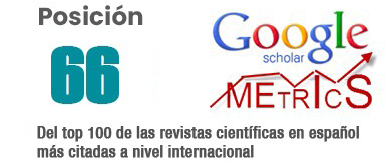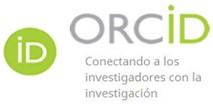Genially as a didactic strategy for teaching the Kichwa language
DOI:
https://doi.org/10.62452/2tqt8m15Keywords:
Didactics, teaching, Kichwa LanguageAbstract
The document addresses the teaching and preservation of the Kichwa language in a contemporary educational context, where indigenous languages face significant challenges due to the predominance of majority languages and rapid technological evolution. The importance of integrating technological tools, such as Genially, in the teaching of Kichwa is highlighted, since these allow the creation of visual and interactive educational resources that promote dynamic and meaningful learning. However, problems are identified such as the digital divide, the lack of technological infrastructure in rural areas and the need for teacher training in the use of these tools. These limitations perpetuate inequalities in access to educational resources, affecting the quality of education in communities with fewer resources. To address these challenges, strategies are proposed that include investment in infrastructure, specific training for teachers, and the adaptation of digital resources that work without an internet connection. Collaboration with native speakers and indigenous education experts is crucial to developing content that respects and reflects Kichwa culture. In conclusion, the integration of technology must complement traditional teaching practices, ensuring sustainability and cultural relevance in the educational process.
Downloads
References
Alonso, A., & Mena, S. (2017). Retos en la integración de las TIC en la educación: un análisis crítico de la resistencia al cambio. Revista de Innovación Educativa, 5(2), 23-35. https://www.redalyc.org/pdf/3333/333327288002.pdf
Aucay-Aucay, R. M., Cabrera-Berrezueta, L. B., & Hermann-Acosta, E. A. (2024). Genially como herramienta interactiva para mejorar la motivación de los estudiantes. Revista Metropolitana De Ciencias Aplicadas, 7(S2), 254-263. https://doi.org/10.62452/r5e81z05
Bernal, C. A. (2010). Metodología de la investigación. Administración, economía, humanidades y ciencias sociales (3.a ed.). Pearson Educación.
Briones, G. (2002). Metodología de la investigación en ciencias sociales. Editorial Trillas.
Cabero-Almenara, J., y Llorente-Cejudo, M. C. (2020). La aplicación de las TIC en los procesos educativos: beneficios y desafíos. Revista de Tecnología Educativa, 3(2), 45-60. https://dialnet.unirioja.es/servlet/articulo?codigo=4857163&orden=1&info=link
Castagnola, V., Castagnola, G., Castagnola, A., & Castagnola, C. (2020). La capacitación y su relación con el desempeño laboral en un hospital infantil público de Perú. Journal of business and entrepreneurial studies: JBES, 4(3), 80-89. https://www.redalyc.org/journal/5736/573667939005/
Cebeiro, M. (2011). Las TIC en el ámbito educativo: Perspectivas y desafíos. Editorial Académica.
Challenge Multimedia Project. (1999). Project-Based Learning Handbook: A Guide to Standards-Focused Project-Based Learning for Middle and High School Teachers. Buck Institute for Education.
Díaz-Barriga, F., & Hernández, G. (2002). La práctica docente: Fundamentos y estrategias. McGraw-Hill.
Ecuador. Ministerio de Educación. (2013). Modelo del Sistema de Educación Intercultural Bilingüe (MOSEIB). https://educacion.gob.ec/wp-content/uploads/downloads/2014/03/MOSEIB.pdf
Gómez, A., & Molina, B. (2020). Tecnología y rendimiento académico: Un estudio en escuelas bilingües Kichwa. Journal of Indigenous Studies, 15(3), 45-60. https://ciencialatina.org/index.php/cienciala/article/view/8014
González, M., & Sánchez, M. (2018). La didáctica en la enseñanza moderna. Editorial Didáctica.
Guamán, K., Hernández, E., y Lloay, S. (2021). El proyecto de investigación: La metodología de la investigación científica o jurídica. Revista Conrado, 17(81), 163-168. https://conrado.ucf.edu.cu/index.php/conrado/article/view/1882/1843
Haboud, M. (2019). La lengua kichwa en el Ecuador: Vitalidad, desafíos y propuestas. Revista Andina de Estudios Lingüísticos, 14(1), 67-89.
Koehler, M. J., & Mishra, P. (2009). What is Technological Pedagogical Content Knowledge? Contemporary Issues in Technology and Teacher Education, 9(1), 60-70. https://citejournal.org/volume-9/issue-1-09/general/what-is-technological-pedagogicalcontent-knowledge/
Larios, J., & Fiestas, M. (2023). Introducción al análisis de datos: Herramientas y aplicaciones prácticas. Universidad César Vallejo.
Mintzberg, H., & Quinn, J. B. (1995). El proceso estratégico: conceptos, contextos y casos. Prentice Hall.
Organización de las Naciones Unidas para la Educación, la Ciencia y la Cultura. (2021). Informe mundial sobre el aprendizaje digital. Recuperado de https://unesdoc.unesco.org/ark:/48223/pf0000382957
Ramírez, M. (2021). Diseño de materiales interactivos para lenguas indígenas: un estudio de caso en Ecuador. Revista de Innovación Educativa, 6(1), 34-52. https://www.scielo.org.mx/pdf/ride/v11n21/2007-7467-ride-11-21-e049.pdf
Sánchez, M. (2017). Revitalización lingüística y educación intercultural bilingüe en Ecuador: el caso del kichwa. Lenguas Indígenas y Educación, 8(2), 45-60.
Selwyn, N. (2016). Is Technology Good for Education? Wiley.
Tello, C. (2011). Las TIC y su impacto en los procesos educativos. Editorial Academica.
Trilling, B., & Fadel, C. (2009). 21st Century Skills: Learning for Life in Our Times. Wiley.
Downloads
Published
Issue
Section
License
Copyright (c) 2025 Victor Hugo Yupanqui-Valente, Robert Iván Álvarez-Ochoa, Raymy Chiliquinga-Mazaquiza (Autor/a)

This work is licensed under a Creative Commons Attribution-NonCommercial-ShareAlike 4.0 International License.
Authors who publish in Revista Metropolitana de Ciencias Aplicadas (REMCA), agree to the following terms:
1. Copyright
Authors retain unrestricted copyright to their work. Authors grant the journal the right of first publication. To this end, they assign the journal non-exclusive exploitation rights (reproduction, distribution, public communication, and transformation). Authors may enter into additional agreements for the non-exclusive distribution of the version of the work published in the journal, provided that acknowledgment of its initial publication in this journal is given.
© The authors.
2. License
The articles are published in the journal under the Creative Commons Attribution-NonCommercial-ShareAlike 4.0 International License (CC BY-NC-SA 4.0). The terms can be found at: https://creativecommons.org/licenses/by-nc-sa/4.0/deed.en
This license allows:
- Sharing: Copying and redistributing the material in any medium or format.
- Adapting: Remixing, transforming, and building upon the material.
Under the following terms:
- Attribution: You must give appropriate credit, provide a link to the license, and indicate if any changes were made. You may do this in any reasonable manner, but not in any way that suggests the licensor endorses or sponsors your use.
- NonCommercial: You may not use the material for commercial purposes.
- ShareAlike: If you remix, transform, or build upon the material, you must distribute your creation under the same license as the original work.
There are no additional restrictions. You may not apply legal terms or technological measures that legally restrict others from doing anything the license permits.




